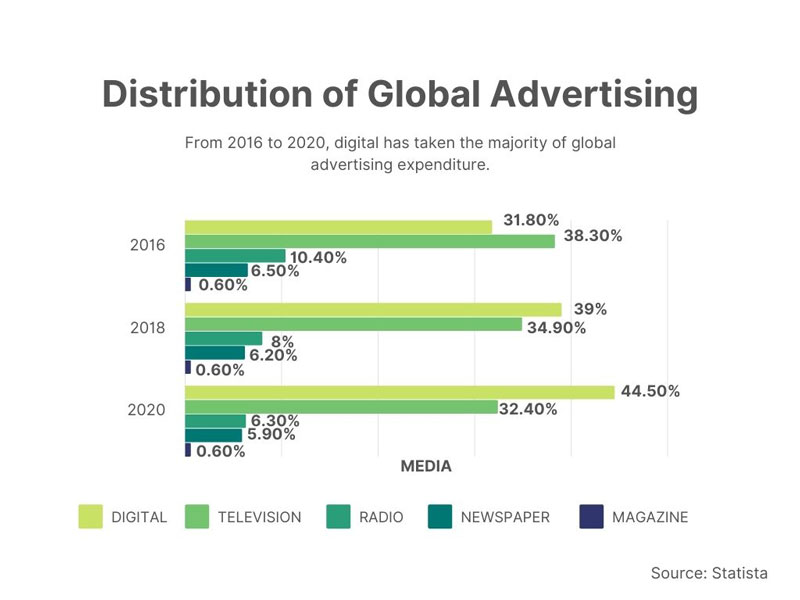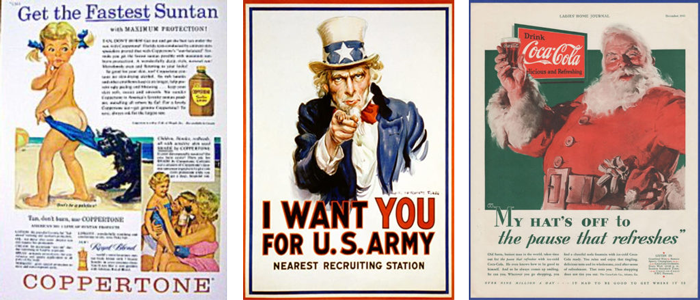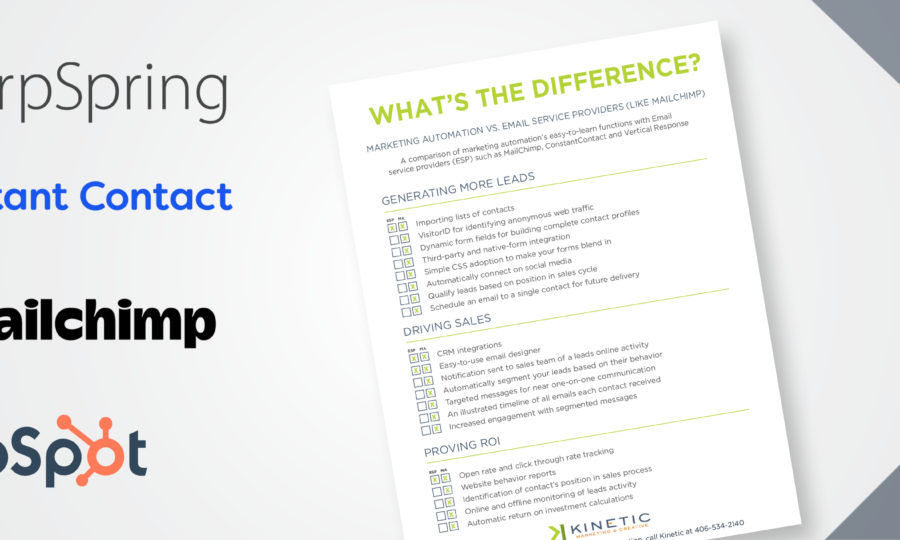Traditional Media Isn’t Dying… Or Is It?
With a background in both television and radio advertising, my love for “traditional” media advertising runs deep. That being said, how do you know if traditional media is still a viable option for your current advertising needs?
Traditional media is advertising on channels that were around way before digital marketing became prevalent. These include print media like newspapers and magazines, broadcast media like TV and radio, and outdoor advertising like billboards, posters, and flyers.
Traditional media advertising can provide businesses with a wider reach, help build brand credibility, and offer a targeted approach to reaching specific audiences.
Television Advertising
Television advertising has been one of the most popular and lucrative forms of advertising throughout the world. Why is that? Television advertising is unique in that it showcases your advertising message internationally. Using sight, sound, motion and emotion, television advertising creates a memorable message about your brand. There are many different examples of television advertising that stand out, and some of the most effective emphasize nostalgia and serve to connect with audiences on an individual level by connecting to their life experiences.
Tell me you didn’t sing along with Meow Mix, or WAAS Up a little to yourself. These are just three of the countless examples of television advertising that have been produced and that have truly become fixtures in the minds of potential customers. But just because they are memorable doesn’t mean that they hit the mark and helped increase business.
Television advertising is expensive. It’s not only expensive to place a buy in a popular show or event on television, but it can also be very expensive to produce an ad. How can you be sure that your expensive advertisement is even reaching your ideal customer? The success of television advertising can be difficult to track, and as it is a medium that reaches such a broad audience, it can be difficult to know if you are in fact reaching your target client. And, we’re seeing streaming services become more and more popular (which limits the amount of people who will actually view your advertisement on traditional broadcast and cable television).

Digital advertising has taken the #1 position in global advertising expenditure, but television still accounts for 32.4%.
Radio Advertising
Radio advertising still reaches over 83% of the population. Although it doesn’t convene the same amount of interaction from a potential client as television advertising, it still has the ability to create a memory to the person who hears your advertisement.
One unique way that advertisers have found to stick out in the minds of listeners is by the use of jingles. Well done jingles often don’t even need the name of the business; a listener knows who the business is just by hearing the tune.
Some of the issues that arise from radio advertising come from the fact that with radio, you are rarely speaking to an audience that is focused solely on what is being presented to them. Radio listeners are almost always doing something else while listening to the radio. Whether it’s driving, working, cleaning or cooking, you rarely have the undivided attention of a radio listener. In this respect, it’s important to craft a message for your business that will rise above the noise of everyday life.
While radio advertising isn’t necessarily as expensive as television advertising, it can still take a large budget to achieve the results you want. So, with radio broadcast advertising you run the risk of advertising to an audience whose attention may be divided, and you may be spending a lot of money to speak to them.

A Deloitte survey asked people of various ages if they ever listened to radio (any AM/FM radio broadcast, online versions of broadcasts, or satellite radio), then compared that data to their reach, and found people listen to the radio more than they think.
Print Advertising
Print advertising is one of the oldest marketing channels around. There has been paid advertising for as long as there have been newspapers and magazines. One of the oldest methods of advertising, print advertising has been around since the 15th century. The last 100 years have really seen print advertising shine, and it was for a long time the ultimate way to reach your ideal client. A lot has changed since print advertising was at its peak. Here are a few examples of some more iconic print advertisements…

Print advertising can be visually exciting and give an advertiser the opportunity to add copy into their advertisement — something people can read to themselves and absorb. Many feel that print advertising is the most trusted form of advertising due to its longevity.
There are however many downfalls to print advertising as we know it today. First, it’s a medium that is not typically long-lasting in a person’s possession. This means that newspapers and magazines are often thrown out after reading. People have learned to skim over most advertisements unless they are so visually stimulating that they are truly able to capture the attention of the reader.
With many publications now available digitally, print advertising has also seen a steep decline in readership, with local newspapers taking a very hard hit. Print advertising can also be very expensive to produce and purchase.
So, Is Traditional Media Dying?
Now back to the ultimate question… are these traditional forms of media advertisements dead with all of the struggles that they have encountered and the increase in digital advertising options?
The simple answer is no, traditional media is not dead; it’s just different.
While viewership, subscriptions, and listening habits may have changed, the effectiveness of these different media has not. That is if they are are used within the scope of a fully thought out marketing plan. Traditional media can lend credibility to newer media options, and the use of several different avenues can enhance your efforts to make a very powerful marketing plan.
When considering traditional marketing versus digital marketing, it’s important to remember that not everyone is online all the time. People do still watch TV, listen to the radio and read newspapers.
Remember, advertising’s most basic purpose is to target an audience and attract and convert as many ideal customers as possible. This cannot be done using only one means to reach your target. While there is no prescribed ideal recipe for traditional and digital advertising, using a mix is the best way to reach your goals and business objectives.




